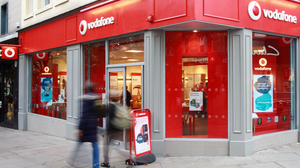The quiet sunset of 5G dynamic spectrum sharing
Dynamic spectrum sharing, or DSS, was once a hotly debated topic among AT&T, T-Mobile and Verizon. Now, however, the technology appears to have been quickly retired in the US.

Dynamic spectrum sharing (DSS) was one of the hottest topics in the wireless industry in the early days of 5G. But the technology appears to have been discontinued in the US as network operators expand their 5G operations across a variety of spectrum bands.
"DSS was a feature that AT&T used only in the initial launch of 5G," an AT&T spokesperson wrote in response to questions from Light Reading. The operator first launched DSS on its 850MHz spectrum in 2020.
"Engineering teams discovered that DSS did not effectively mitigate reference signal interference and that lower-bandwidth, non-DSS NR [5G New Radio] carriers had better throughput," the AT&T representative explained.
AT&T shuttered most of its DSS deployment during 2021, according to the spokesperson, and instead flipped its 5G operations in 850MHz to a dedicated 5G channel.
Verizon officials didn't respond to Light Reading's questions on the topic. But analysts said Verizon's usage of DSS probably followed a trajectory similar to AT&T's.
T-Mobile never used DSS, according to a representative of the company.
"While other wireless operators relied on DSS to expand their 5G footprint, we rolled out spectrum fully dedicated to 5G nationwide," the T-Mobile spokesperson told Light Reading. "We carried out extensive testing on DSS, but its performance is not comparable to using dedicated spectrum."
DSS as a stopgap
Analyst Daryl Schoolar, with Recon Analytics, told Light Reading that DSS technology helped 4G operators quickly introduce 5G technology into their networks via an innovative sharing mechanism. However, that approach didn't provide much of an overall boost to customers' speeds. Instead, the speeds increased when operators began dedicating spectrum channels to 5G.
"It's not something an operator wants to deploy long term, but in the early stages it has value," Schoolar explained about DSS. "You want to get off of it as soon as possible."
As Light Reading reported in 2019, DSS allows 4G and 5G users to take turns using the same chunk of spectrum via 1 millisecond increments.
Both AT&T and Verizon introduced 5G on their lowband spectrum holdings using DSS starting in 2020. "We can't help but be disappointed," one research firm, Signals Research Group, concluded after the operators' early tests of the technology.
T-Mobile officials voiced early skepticism about DSS. But that's partly because the operator had unused 600MHz spectrum that it could dedicate exclusively to 5G.
AT&T and Verizon, meanwhile, already had their 4G services working across their lowband spectrum holdings, and therefore decided to use DSS as a way to quickly and efficiently introduce 5G into their operations during the early days of deployment.
Today, T-Mobile, AT&T and Verizon have all rolled out 5G across a variety of spectrum bands, which means they no longer need to use DSS.
A tool in the toolbox
"The major operators used DSS to make their transition from 4G to 5G smoother, and it absolutely can help to ease the transition," wrote analyst Joe Madden with Mobile Experts in response to questions from Light Reading. "Because [4G] LTE and 5G-NR waveforms were very similar, it was possible to run both on a common radio carrier. Because the operators can't upgrade their installed base of user devices instantly, it's important to allow a transition period where both formats work at the same time."
Madden also suggested that DSS could be used again in the future, particularly if operators shift from 5G to 6G networks. Already some standards bodies have begun work on 6G with an eye toward commercial networks in the 2030 timeframe.
"This is also a key issue in the background of discussions about 6G, because the operators insist on being able to transition from 5G to 6G using a form of DSS," Madden wrote. "That means that the 6G waveform will look very similar to the OFDM [orthogonal frequency division multiplexing] format used in 4G and 5G as well."
DoD looks at DSS
The DSS discussion goes beyond wireless operators. US Department of Defense (DoD) officials have discussed dynamic spectrum sharing as a way to free up the lower 3GHz spectrum band for 5G.
But the DoD's idea of DSS is much different from AT&T's and Verizon's in the early days of 5G, according to Schoolar. The DoD's view involves sharing spectrum between two different groups of users: commercial network operators and federal users like the US military. Indeed, that's the kind of sharing happening today in the 3.5GHz CBRS spectrum band.
However, sharing in the CBRS band is a relatively manual process. A sensor network scans for military users and then works with a database to move commercial users to a different part of the band.
The US military has also considered another sharing technology called Incumbent Informing Capability (IIC).
"The IIC concept is a time- and location-based spectrum sharing approach that would enable DoD and other federal spectrum users to submit information, reliably and securely, about when and where they would be employing certain frequencies," according to an NTIA official in 2020. "This scheduling information would inform a spectrum coordination system (SCS), in conjunction with advanced computer databases, allowing 5G commercial network providers to adjust operations in real time and avoid harmful interference."
The NTIA official added: "The goal is to enable efficient, secure and reliable spectrum sharing between new commercial networks and the incumbent federal systems."
More recently, DoD officials said they would begin work on a dynamic spectrum sharing mechanism they described as a "moonshot" because of its complexity and importance.
About the Author(s)
You May Also Like












